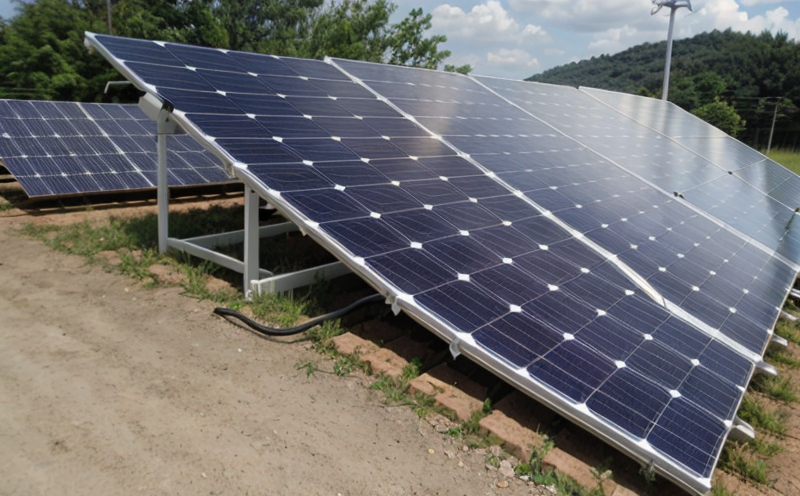ASTM E2236 Spectral Response Testing of PV Modules
ASTM E2236 spectral response testing is a critical procedure in the quality assurance and compliance processes for photovoltaic (PV) modules. This test evaluates how efficiently a solar panel converts light into electricity by measuring its spectral response across various wavelengths. This service ensures that manufacturers meet industry standards, enhance product reliability, and ensure safety and performance.The testing process involves illuminating the PV module with a controlled spectrum of light while recording the current output at each wavelength. The resulting data helps determine if the device complies with international standards such as ASTM E2236, IEC 61215, and EN 50495.
ASTM E2236 spectral response testing is particularly important for quality managers looking to ensure that their products meet regulatory requirements. It helps in identifying any performance discrepancies early on, which can be costly if not addressed during the production phase. For R&D engineers, this test provides valuable insights into material properties and design improvements.
The process begins with meticulous preparation of the PV module under standard operating conditions. This includes cleaning the surface to remove dust and dirt, ensuring that the temperature is stable, and aligning the module correctly within the testing setup. The illumination source must also be precisely controlled to ensure accurate results.
Once prepared, the test involves measuring current at each wavelength using a spectrally calibrated light source. This step-by-step approach ensures accuracy and reliability in the final data output. The collected data is then analyzed against established standards to determine compliance or any deviations that might need further investigation.
The importance of this testing cannot be overstated, especially for those operating within competitive markets where quality and performance are paramount. By adhering to these rigorous tests, companies not only enhance their reputation but also ensure long-term customer satisfaction and trust.
Applied Standards
| Standard | Description |
|---|---|
| ASTM E2236 | Procedure for Determining the Spectral Response of Photovoltaic Cells and Modules. |
| IEC 61215 | Photovoltaic (PV) modules—Design qualification and performance testing. |
| EN 50495 | Photovoltaic devices—Performance tests for PV modules. |
Competitive Advantage and Market Impact
Adherence to ASTM E2236 spectral response testing offers significant competitive advantages. By ensuring that your products meet stringent international standards, you can differentiate yourself in the market by offering superior quality and reliability. This is particularly crucial for companies operating in global markets where compliance with international regulations is non-negotiable.Meeting these standards also enhances brand reputation, which translates into increased customer trust and satisfaction. In a highly competitive landscape, such factors can be decisive in securing larger contracts and expanding market share. Compliance also opens doors to new opportunities for collaboration and partnerships.
The data generated from spectral response testing is invaluable for R&D teams working on improving product designs and materials. It provides insights into how changes in manufacturing processes or material selection affect performance, enabling continuous improvement and innovation.
Use Cases and Application Examples
- Quality Assurance: Ensuring that each PV module meets the required performance standards before shipment.
- R&D Development: Optimizing the design of new solar cells or modules to improve efficiency and reduce costs.
- Compliance Audits: Preparing for inspections by regulatory bodies to ensure adherence to international standards.
- Supplier Evaluation: Verifying that third-party suppliers meet specified performance criteria.
- Customer Satisfaction: Providing detailed reports on the performance of PV modules, ensuring customers are informed and reassured about product quality.





